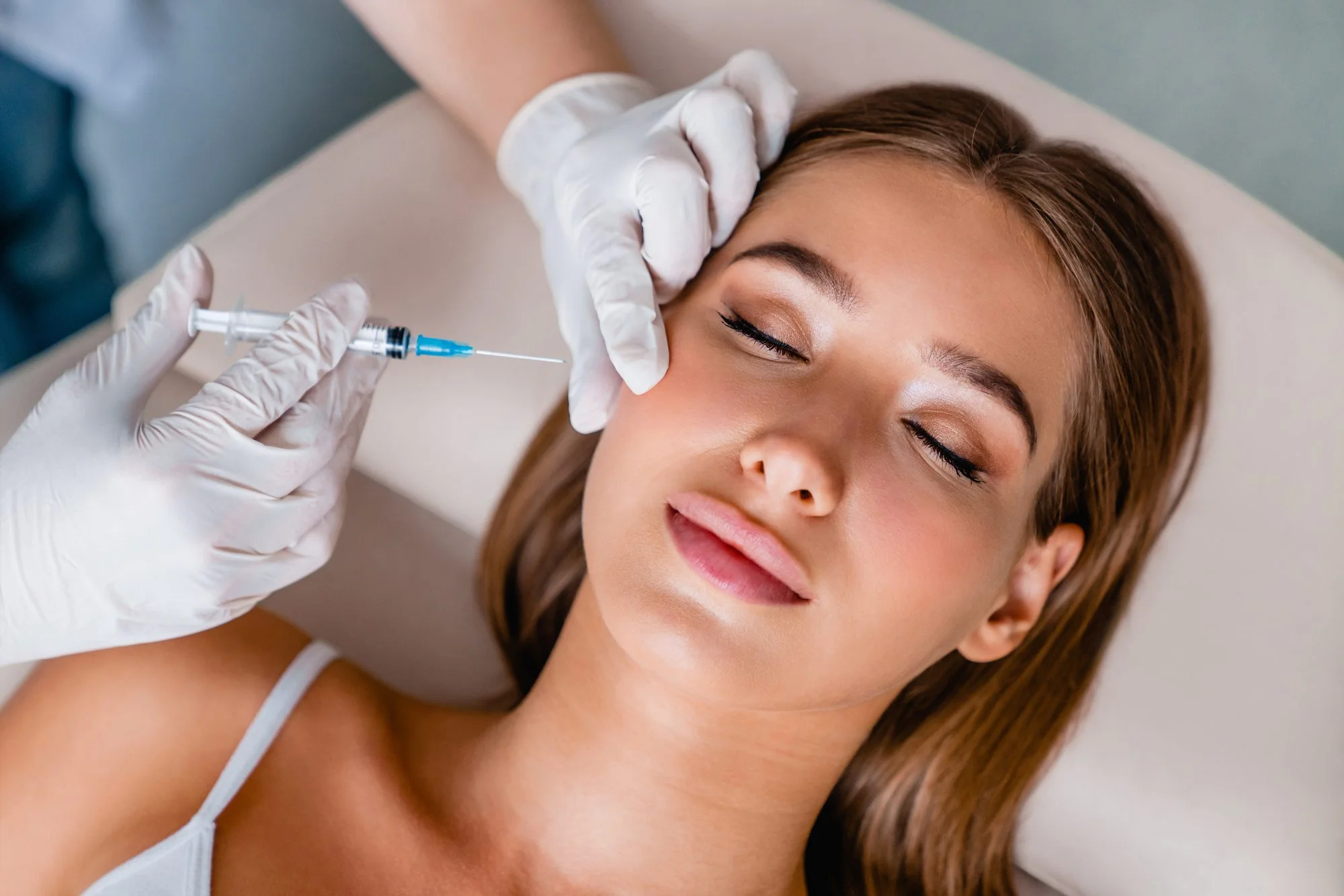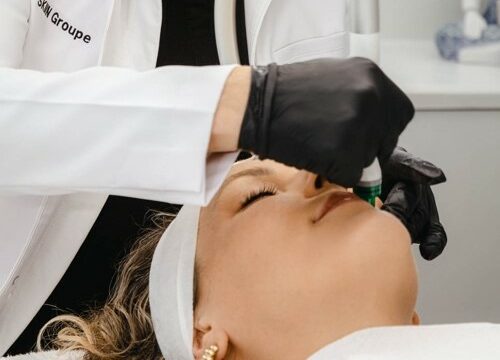Botox is a famous beauty remedy used to lessen the appearance of wrinkles and treat various clinical conditions. This in-depth look at Botox injections covers how they work, their uses, training, aftercare, risks, benefits, and recovery.
Botox is derived from the Clostridium botulinum microorganism and works by blocking nerve signals in muscular tissues, primary to transient muscle paralysis. It is generally used for cosmetic issues like frown lines, crow’s feet, and brow wrinkles by underlying muscle tissues. In addition to cosmetic uses, Botox is authorized for treating various scientific situations like cervical dystonia (neck spasms), hyperhidrosis (immoderate sweating), overactive bladder, continual migraines, and strabismus (lazy eye). It can also alleviate aches by concentrating on specific muscular tissues contributing to pain.
Before the present process of Botox treatment, it’s far more essential to seek advice from a healthcare issuer to talk about your goals and medical records. A healthcare provider will use a needle to inject Botox into centered muscle tissue during the process. After receiving Botox injections, patients can also reveal slight swelling or bruising at the injection site. Results are commonly visible within some days; however might also take in to two weeks for complete effect. The results of Botox remain approximately 3-6 months before muscle pastime returns to regular degrees.
While Botox is usually safe and nursed effectively, there are ability aspect outcomes to be confidential.
Expected facet consequences consist of transient pain, swelling, bruising at the injection site, headache, droopy eyelids, asymmetrical smile, watery eyes, and rare infection or unintended unfold of the toxin. Serious facet results like muscle weakness or respiratory difficulties require on-the-spot scientific attention.
For expertly administered Botox remedies tailored to your aesthetic goals and health needs, consult The SKIIN Groupe for personalized care and exceptional results.
Basic Understanding of Botox
What is Botox®?
Botox is a neurotoxin derived from Clostridium botulinum bacteria. It blocks nerve signals in muscle mass, leading to brief muscle paralysis. This effect smooths out wrinkles and can also be used to treat certain scientific situations.
How does Botox Work?
When injected into precise muscular tissues, Botox blocks the discharge of acetylcholine, a neurotransmitter responsible for muscle contractions. By inhibiting muscle motion, Botox can lessen the advent of wrinkles and treat situations like muscle spasms and migraines.
Cosmetic Conditions Treated with Botox:
Botox is typically used to address beauty concerns, which include frown strains, crow’s feet, and forehead wrinkles, by enjoying the underlying muscle groups.
Medical Conditions Treated with Botox:
In addition to cosmetic uses, Botox is authorized for treating numerous scientific situations like cervical dystonia (neck spasms), hyperhidrosis (excessive sweating), overactive bladder, continual migraines, and strabismus (lazy eye).
Can Botox assist in reducing pain?
Botox injections are a multifaceted solution, not only for aesthetic enhancement but also for assuaging aches. Targeting unique muscle tissues contributing to pain, Botox has proven to be especially powerful in addressing chronic migraines and muscle spasms. Botox can provide comfort from continual aches by strategically inhibiting muscle contractions, supplying sufferers with a twin benefit of aesthetic development and improved well-being.
What is Botox made of?
The key to Botox’s transformative abilities lies in its composition. Derived from a purified form of botulinum toxin, kind A, Botox operates on a molecular level to briefly paralyze muscular tissues. This happens by blocking nerve signals accountable for triggering muscle contractions. Botox’s unique method guarantees its targeted action, allowing for controlled and predictable consequences in both cosmetic and scientific programs.
Is Botox safe?
Safety is paramount when considering any clinical intervention; Botox is no exception. Administered with the aid of a qualified healthcare provider in appropriate doses, Botox is generally regarded as safe for cosmetic and clinical purposes. The carefully calibrated application of Botox entails blocking particular nerve signals to attain the preferred outcomes without compromising ordinary fitness.
However, as with every scientific technique, engaging in thorough discussions with a healthcare expert is vital to apprehending potential risks and advantages, ensuring a well-informed decision-making method. The dedication to safety underscores the responsible use of Botox in handing over no longer only aesthetic improvements but additionally therapeutic relief.
Procedure Details
How should I prepare for Botox?
Embarking on a Botox journey starts with a critical step – a session with a healthcare provider. This pre-remedy discussion serves as a personalized gateway, permitting you to articulate your aesthetic goals and provide insight into your medical records. Transparent communication is critical throughout this section. Disclose any medicinal drugs you’re currently taking, allergic reactions, and relevant clinical data. Your healthcare issuer will manual you through the method, offering tailored recommendations and addressing any issues. This collaborative approach guarantees comprehensive information about your needs and sets the level for a secure and effective Botox enjoy.
What should I anticipate during Botox treatment?
As the day of your Botox treatment arrives, anticipation mixes with the pleasure of transformative possibilities. The technique is a meticulously orchestrated system performed by a skilled healthcare company. Botox is precisely injected into centered muscles using a fine needle, a task that calls for both information and artistic contact. While pain is minimal for almost all, providers may additionally use topical anesthetics or ice packs to numb the remedy place, enhancing your comfort. The putting for Botox administration is usually a medical workplace, offering an expert and controlled environment conducive to premiere effects. The injections are rapid, reflecting the performance of a professionally practiced healthcare team.
What should I know about Botox aftercare?
Post-treatment marks the start of the aftercare section, a length of vigilance and patience. It is not unusual to revel in mild swelling or bruising at the injection website, a brief reminder of the transformative technique underway underneath the skin. Results from Botox injections commonly happen within a few days, with the full impact turning obvious over the subsequent two weeks. To optimize these outcomes and ensure a smooth recovery, it’s beneficial to chorus from rubbing or massaging the handled vicinity immediately after the method. Specific aftercare instructions provided by your healthcare company must be diligently observed, contributing to the achievement and sturdiness of your Botox.
How often should you get Botox?
The frequency of Botox treatments varies depending on individual factors such as metabolism and muscle activity. Initially, treatments are recommended every 3-4 months to maintain optimal results. Over time, some individuals may require less frequent treatments as muscles weaken with repeated injections.
Risks / Benefits
Are there any Botox side effects?
While the protection profile of Botox is commonly commendable while administered correctly, it is vital to be privy to capacity facet consequences. Common, albeit temporary, reactions may additionally encompass pain, swelling, and bruising at the injection site. A few people may also face headaches, temporary droopy eyelids, asymmetrical smiles, or watery eyes. These results are generally moderate and quick-lived.
However, in rare cases, more intense side effects can occur, including infection or accidental spread of the toxin. It is crucial to approach Botox remedies cautiously and talk brazenly with your healthcare provider about any issues. Serious side effects like muscle weakness or respiration problems require instant medical attention, underscoring the importance of seeking set-off help.
Who should not get Botox injections?
Based on the information from the sources provided, specific groups of individuals should not receive Botox injections. These include
Pregnant or Breastfeeding Women: Due to potential risks to the fetus and lack of conclusive studies on the effects of Botox during pregnancy, it is advised to avoid Botox injections while pregnant or nursing.
People with Neuromuscular Disorders: Individuals with neuromuscular diseases like ALS, Lambert-Eaton syndrome, and myasthenia gravis should avoid Botox due to the risk of exacerbating muscle weakness and respiratory problems.
Those Allergic to Botox: While rare, allergic reactions can occur, leading to symptoms like wheezing, itching, swelling, and fainting. It is crucial to consult a physician before considering Botox injections if you have known allergies.
Recovery and Outlook
How long does it take for Botox to recover?
Embarking on the transformative adventure of Botox, sufferers eagerly anticipate the sluggish unveiling of its consequences. Typically, within 3-4 days of submit-remedy, the effect starts to take place as the focused muscle groups steadily give up on the relaxing effect of Botox. The transformation unfolds over the following 10-14 days, revealing the overall spectrum of consequences performed via these cautiously administered injections. This time frame mirrors the intricate dance between the neurotoxin and the muscles it addresses, ensuring a nuanced and natural progression toward the desired aesthetic outcome.
The sturdiness of Botox’s effects:
While the results of Botox are undeniably astonishing, they are now not permanent. The rejuvenating consequences from Botox injections typically close in about 3-6 months. This period encapsulates a duration of sustained aesthetic enhancement before muscle pastime regularly returns to its normal levels. The brief nature of Botox aligns with its non-invasive nature, allowing people the power to determine while pursuing subsequent remedies primarily based on their evolving aesthetic options.
When to Call the Doctor:
Your adventure with Botox is a collaborative undertaking; as such, open communication with your healthcare issuer is fundamental. If you occur to enjoy severe or continual facet consequences post-Botox injections or harbor any issues about your treatment consequences, it is imperative to contact your healthcare provider right away. This proactive technique ensures a fast and thorough evaluation, addressing apprehensions and guiding you toward foremost submit-remedy care.
Don’t forget to entrust your Botox remedies to The SKIIN Groupe for a seamless blend of personalized attention and super outcomes. Our commitment to your well-being and pleasure underscores each issue of the cultured adventure, ensuring a harmonious and transformative enjoyment.







